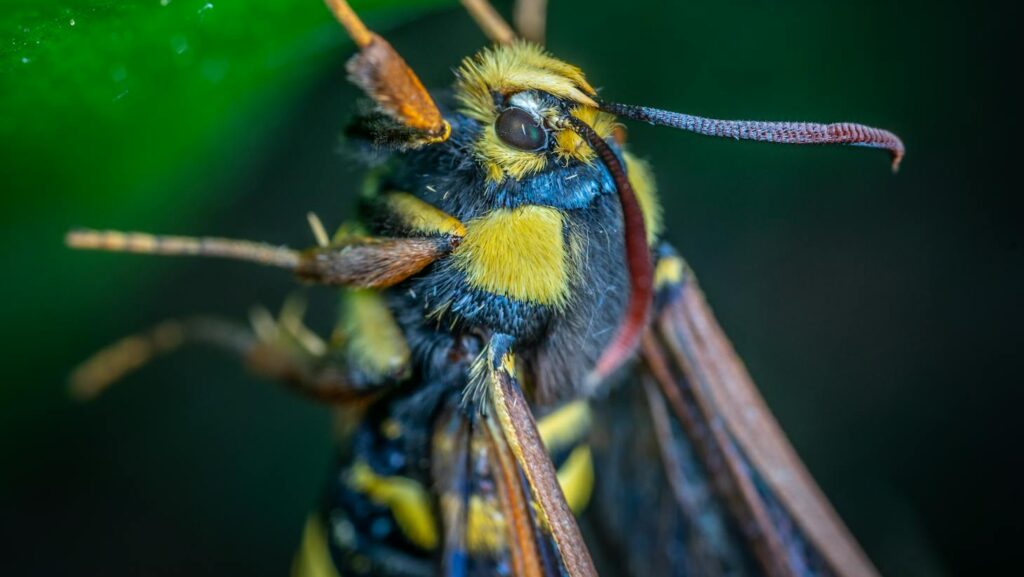
In the complex theater of natural selection, some of the most remarkable performances come from creatures that have mastered the art of deception. Among these master illusionists is the clearwing moth, a fascinating insect that has evolved to mimic the appearance and behaviors of wasps, despite being completely harmless. This evolutionary strategy, known as Batesian mimicry, provides these delicate moths with a powerful defense mechanism against potential predators who have learned to avoid the painful sting of wasps. The clearwing moth’s impressive impersonation extends beyond mere appearance, encompassing movement patterns and even sound production that further sells their dangerous façade. As we explore this remarkable example of evolutionary adaptation, we’ll discover how nature has crafted one of the most convincing disguises in the animal kingdom.
The Science of Batesian Mimicry
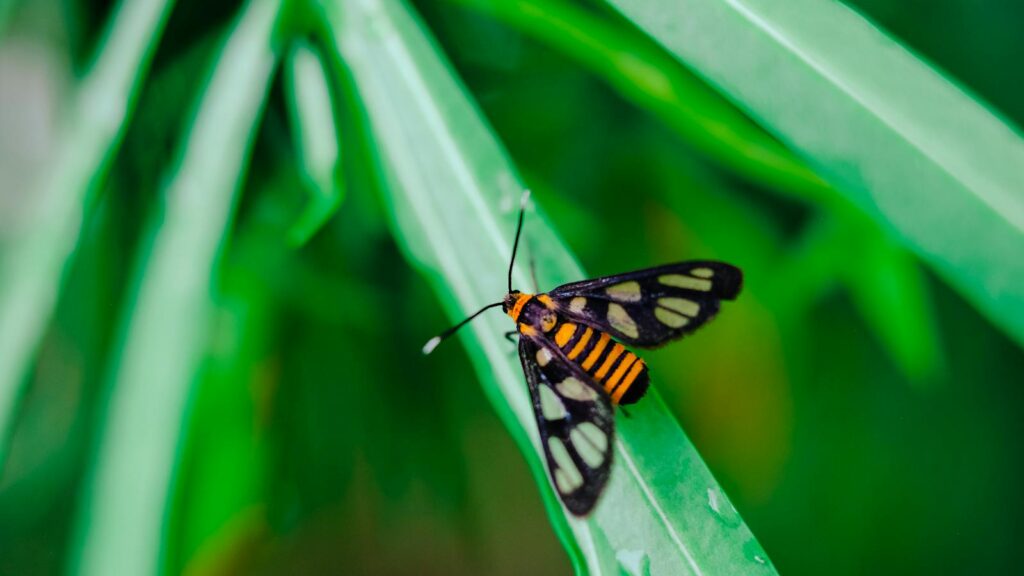
Batesian mimicry represents one of nature’s most sophisticated defensive strategies, where harmless species evolve to resemble dangerous or toxic ones to deter predators. Named after the English naturalist Henry Walter Bates, who first described this phenomenon in the 1860s, this form of mimicry relies on predators learning to avoid certain patterns or appearances associated with unpleasant experiences. The clearwing moth exemplifies this strategy perfectly, having evolved to resemble wasps so convincingly that even experienced entomologists might need a second look to tell them apart. Unlike some mimics that only superficially resemble their models, clearwing moths have developed multiple adaptations that create a comprehensive wasp-like appearance and behavior. The effectiveness of this mimicry depends on predators having prior negative encounters with real wasps, creating a protective umbrella under which these moths can safely operate.
Meet the Clearwing Moth Family
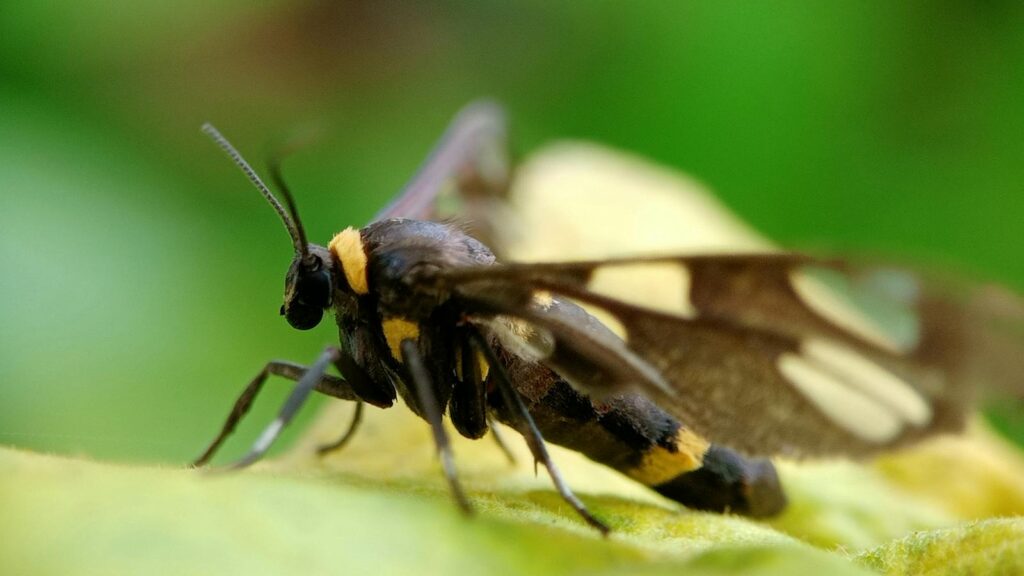
The family Sesiidae, commonly known as clearwing moths, comprises approximately 1,400 species distributed worldwide, with particularly high diversity in tropical regions. Unlike typical moths with their dusty, scale-covered wings, clearwing moths have evolved largely transparent wings that lack scales except along the veins and margins, creating a striking resemblance to wasp wings. Many species in this family display remarkable specialization in mimicking specific wasp or hornet species native to their habitat, demonstrating the precision of evolutionary adaptations. Clearwing moths range in size from small, with wingspans of just 10-15mm, to relatively large specimens reaching 40mm across, allowing different species to mimic various sizes of wasps and hornets. Despite their wasp-like appearance, these insects are true Lepidoptera, sharing the fundamental biology and life cycle characteristics of butterflies and moths.
Physical Adaptations for Perfect Mimicry
The clearwing moth’s physical transformation to resemble wasps represents one of the most complete mimicry packages in the insect world. Beyond their namesake transparent wings, these moths have evolved narrow wasp-like bodies, often with distinctive yellow and black banding patterns that immediately signal danger to potential predators. Many species have also developed specialized scale patterns that create the illusion of a narrow “waist” between the thorax and abdomen, mimicking the distinctive constricted waist of wasps and hornets known as the petiole. Some clearwing moths have even evolved tufts of hair-like scales at the end of their abdomens that resemble the ovipositors or stingers of their wasp models when displayed. Their antennae have also diverged from the typical feathery moth pattern to resemble the straight, clubbed antennae of many wasps, completing the visual deception.
Behavioral Mimicry: Moving Like a Wasp
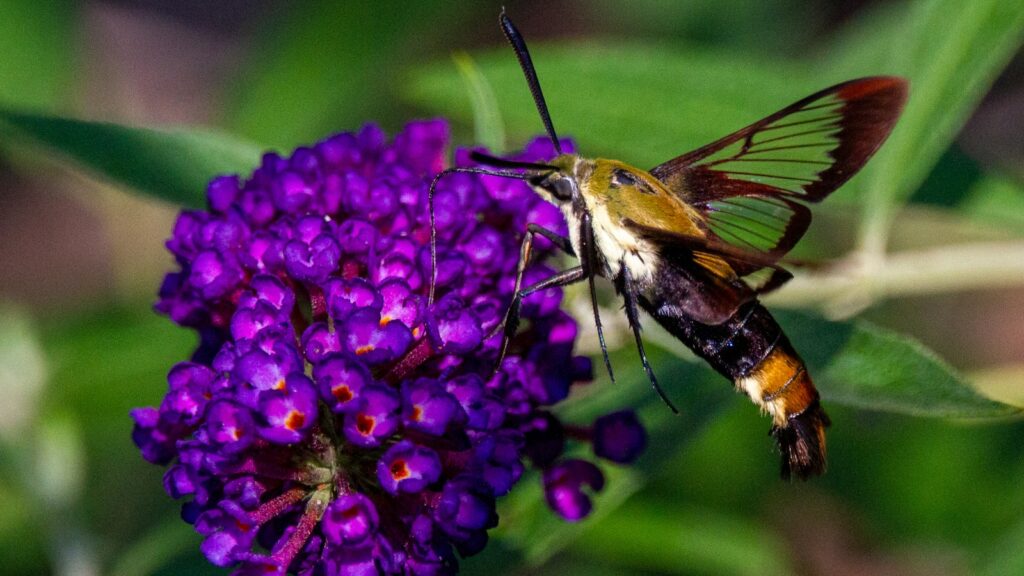
The clearwing moth’s mimicry extends well beyond physical appearance into the realm of behavior, creating a convincing performance that enhances their protective disguise. Unlike the erratic fluttering typical of moths, clearwing moths fly with the direct, purposeful movement patterns characteristic of wasps, often hovering with their bodies held straight and legs dangling in a distinctly wasp-like manner. When disturbed, many species will adopt threatening postures similar to those of agitated wasps, turning to face potential threats and sometimes raising their abdomens as if preparing to sting. Some species even mimic the wing-fanning behavior that wasps use to disperse pheromones or cool their nests, despite having no functional reason to perform this action. Perhaps most remarkably, certain clearwing moths can produce buzzing sounds that mimic wasp wing vibrations, adding an auditory component to their already convincing visual disguise.
The Evolutionary Journey to Wasp Mimicry

The evolution of wasp mimicry in clearwing moths didn’t happen overnight but represents millions of years of incremental changes driven by selective pressure from predators. Scientists believe the process likely began with moths that happened to have slightly fewer scales on their wings, giving them a minor resemblance to wasps that provided even a small survival advantage against visually-hunting predators. Each successive generation that survived to reproduce passed on traits that enhanced this resemblance, with natural selection favoring individuals that most convincingly resembled dangerous wasps. This evolutionary arms race has led to increasingly perfect mimicry, with different lineages of clearwing moths independently evolving similar adaptations in what biologists call convergent evolution. Genetic studies have identified several mutations affecting scale development, body pigmentation, and wing morphology that contribute to the wasp-like appearance, showing how multiple genetic changes work together to create the complete mimetic disguise.
Predators That Fall for the Disguise

The primary targets of the clearwing moth’s deceptive strategy are visual hunters that rely heavily on sight to identify potential prey, particularly birds and certain predatory insects. Birds represent the most significant threat to adult moths and have excellent color vision, making them especially susceptible to being deceived by the warning coloration and wasp-like appearance of clearwing moths. Research has demonstrated that inexperienced juvenile birds will often avoid clearwing moths after having negative experiences with real wasps, sometimes even showing innate wariness toward the yellow and black warning patterns. Mantids, jumping spiders, and other arthropod predators that hunt by sight have also been observed avoiding clearwing moths despite readily attacking other moth species of similar size. Experimental studies where the wings of clearwing moths were artificially covered with scales to reduce their wasp resemblance resulted in significantly higher predation rates, confirming the protective value of their mimicry.
The Day-Flying Lifestyle

Unlike most moths that are nocturnal, clearwing moths have adopted a diurnal (daytime) lifestyle that maximizes the effectiveness of their wasp mimicry. This shift to daytime activity makes evolutionary sense, as their primary mimicry targets—wasps and hornets—are themselves diurnal insects, and the predators most likely to be fooled by their disguise are also active during daylight hours. Flying during the day allows clearwing moths to be seen by potential predators, ensuring their warning signals are clearly visible in good lighting conditions where colors and patterns are most apparent. This diurnal habit represents a significant departure from their nocturnal moth ancestors and has required additional adaptations, including enhanced visual systems and changes to their metabolic and thermoregulatory processes to function efficiently in daylight. The clearwing moth’s daytime activity pattern serves as a perfect example of how behavioral adaptations can complement physical mimicry to create a more effective defensive strategy.
Life Cycle and Reproduction
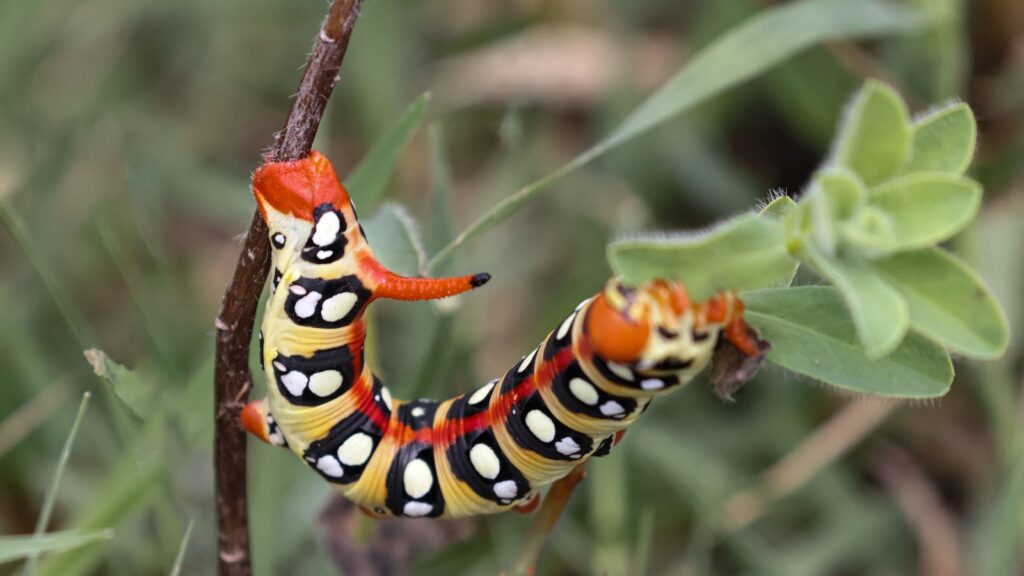
Despite their wasp-like adult form, clearwing moths undergo the complete metamorphosis typical of all Lepidoptera, with distinct egg, larval, pupal, and adult stages. Female moths lay their eggs on specific host plants, with different species showing strong preferences for particular plant families; many North American species target woody plants including dogwood, viburnum, and various fruit trees. Unlike their showy adult forms, clearwing caterpillars don’t mimic wasps but are typically pale, worm-like larvae that bore into the stems, roots, or trunks of their host plants, feeding internally and thus gaining protection from predators. After developing through multiple instars, the larvae create pupation chambers within their host plants, often near the bark surface to facilitate adult emergence. The pupal stage can last from a few weeks to over a year depending on the species and environmental conditions, with some species synchronizing their emergence to coincide with the activity periods of the wasps they mimic.
Notable Clearwing Moth Species

Among the most spectacular examples of wasp mimics is the hornet moth (Sesia apiformis), a large European species that bears an uncanny resemblance to the European hornet with its yellow and black abdomen, brown thorax, and impressive wingspan of up to 40mm. North American gardens often host the squash vine borer (Melittia cucurbitae), a clearwing moth that mimics paper wasps and whose larvae can be significant pests of cucurbit crops such as pumpkins and squash. The raspberry crown borer (Pennisetia marginata) presents another remarkable example, closely resembling yellow jacket wasps while its larvae feed on the crowns and roots of raspberry and blackberry plants. The peachtree borer (Synanthedon exitiosa) displays interesting sexual dimorphism, with females mimicking paper wasps with their orange-banded abdomens while males more closely resemble black wasps with narrow yellow stripes. Some tropical species like the coffee clearwing (Cephonodes hylas) have evolved to mimic not just the appearance but even the flight sounds of carpenter bees and hornets, creating a multi-sensory deception.
Agricultural Significance and Management

While adult clearwing moths are harmless nectar-feeders that may even provide pollination services, the boring habits of their larvae can cause significant damage to agricultural crops and ornamental plants. Several species are considered serious pests, including the peachtree borer that attacks stone fruit trees, the squash vine borer that can devastate cucurbit crops, and various species that target raspberry, blackberry, and other small fruits. The internal feeding habit of clearwing moth larvae makes them particularly challenging to control, as they remain protected inside plant tissues away from contact insecticides and natural enemies. Management strategies often focus on careful timing of treatments to target adults before they lay eggs or newly hatched larvae before they bore into plants. Pheromone traps mimicking the sex attractants of female moths can be used to monitor population levels and time control measures, while physical barriers like wrapping tree trunks can prevent egg-laying in some species.
Conservation Challenges and Status
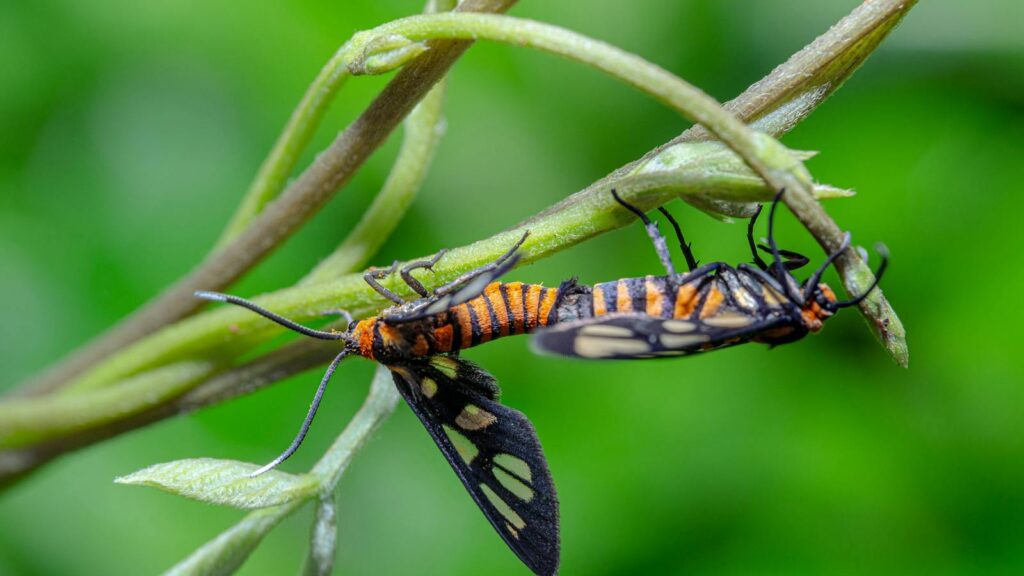
Despite their pest status in agricultural settings, many clearwing moth species play important ecological roles and face various conservation challenges in their natural habitats. Several clearwing moth species have highly specialized relationships with specific native plants and can serve as indicators of ecosystem health in undisturbed habitats. Habitat loss through urbanization and agricultural expansion represents the most significant threat to many specialized clearwing moths, particularly those dependent on specific plant hosts with limited distributions. Climate change poses additional challenges, as it may disrupt the synchronization between moth life cycles and the activity periods of the wasp species they mimic, potentially reducing the effectiveness of their protective mimicry. Several clearwing moth species are classified as threatened or endangered in various regions, with conservation efforts focused on habitat preservation and restoration of host plant populations.
Studying Mimicry: Research Techniques

Scientists employ a diverse toolkit to investigate the remarkable mimicry displayed by clearwing moths, combining traditional field observations with cutting-edge laboratory techniques. Predation experiments using artificial moths with varying degrees of wasp-like features help researchers quantify exactly how different aspects of mimicry contribute to survival rates in natural settings. Sophisticated imaging technologies, including ultraviolet photography and spectral analysis, reveal how predators with different visual systems might perceive the mimics compared to actual wasps. Genetic studies using DNA sequencing and gene expression analysis help identify the molecular mechanisms behind mimetic traits and trace their evolutionary history across the clearwing moth family tree. Behavioral studies using high-speed video capture the subtle movements and flight patterns of clearwing moths to quantify how closely they match those of their wasp models and how these behaviors influence predator responses.
The Future of Mimicry Research
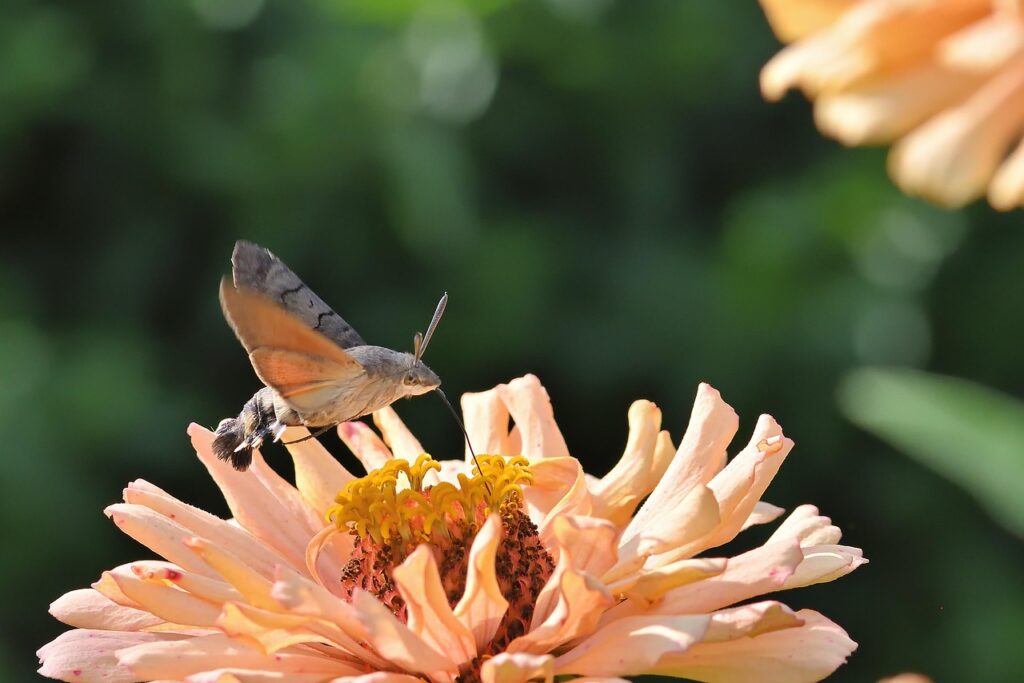
The study of clearwing moths and their remarkable mimicry continues to advance our understanding of evolutionary processes and adaptations, with several exciting research directions emerging in recent years. New genomic techniques are allowing scientists to pinpoint specific genes responsible for mimetic traits, potentially revealing how complex adaptive phenotypes arise and evolve at the molecular level. Research into sensory ecology is expanding our knowledge of how different predators perceive mimetic signals, incorporating insights from neurobiology to understand the cognitive processes involved in recognizing and avoiding dangerous prey. Climate change biology studies are examining how warming temperatures might affect the geographic distribution and seasonal timing of both clearwing moths and their wasp models, with potential implications for the effectiveness of mimicry in changing environments. The intersections of mimicry research with robotics and artificial intelligence are also yielding fascinating applications, as engineers draw inspiration from these evolutionary solutions to develop new technologies for camouflage, deception, and visual signaling.
The clearwing moth stands as one of nature’s most accomplished performers, having evolved a comprehensive disguise that fools predators through multiple sensory channels. From their transparent wings and wasp-like bodies to their convincing flight patterns and behaviors, these moths demonstrate the remarkable precision of natural selection in crafting protective adaptations. Their success illustrates a fundamental principle of evolution: that appearance can be just as important as reality when it comes to survival. As scientists continue to unravel the genetic, developmental, and ecological factors behind this remarkable mimicry, clearwing moths remind us that the natural world remains full of extraordinary deceptions waiting to be discovered and understood—each telling a story of evolutionary innovation driven by the timeless dance between predator and prey.
